The BRICS group, an acronym for Brazil, Russia, India, China, and South Africa, is an association of five major emerging national economies. This article outlines the historical reasons for the formation of the BRICS, the efforts to re-energize the grouping, and the recent trade data in GDP terms for these nations.
The Historical Origins of BRICS
The BRICS group was conceived in the early 2000s, when Goldman Sachs economist Jim O’Neill proposed the term “BRIC” to describe the four major emerging economies – Brazil, Russia, India, and China. The idea was that these countries would become increasingly influential in the global economy, and collaboration between them would foster economic growth, trade, and investment.
In 2006, the leaders of these four countries held their first informal meeting, and in 2009, the first official BRIC summit took place in Yekaterinburg, Russia. In 2010, South Africa joined the group, adding the “S” to the acronym.
The group was formed with the aim of promoting cooperation among member countries in various areas, including trade, finance, infrastructure, and technology. The BRICS nations account for about 40% of the world’s population and over 25% of the global GDP, making the group a significant force in the global economy.
Re-energizing the BRICS Grouping
In recent years, there have been concerted efforts to re-energize the BRICS group, as the economies of the member countries have faced numerous challenges, including slowing growth, political uncertainties, and a changing global economic landscape. Some of the key initiatives taken to rejuvenate the group include:
- The New Development Bank (NDB): Established in 2014, the NDB aims to finance infrastructure and sustainable development projects in the BRICS countries and other developing nations. The bank has already approved several projects, with a focus on renewable energy, transportation, and urban development.
- BRICS Contingent Reserve Arrangement (CRA): This is a framework for providing financial support to member countries facing balance of payments problems. The CRA aims to strengthen the global financial safety net and enhance the resilience of the BRICS countries.
- Increased intra-BRICS trade: The BRICS nations have been working to increase trade among themselves, with a focus on reducing trade barriers, enhancing connectivity, and promoting cooperation in various sectors, including agriculture, energy, and technology.
Recent Trade Data in GDP Terms
As of 2021, the combined GDP of the BRICS nations stood at approximately $41 trillion. The breakdown of each country’s GDP is as follows:
- China: $16.64 trillion
- India: $3.05 trillion
- Brazil: $1.45 trillion
- Russia: $1.48 trillion
- South Africa: $317 billion
Between 2016 and 2021, the average GDP growth rate for the BRICS nations was around 3.5%. While China and India have been the fastest-growing economies, averaging growth rates of 6.1% and 4.7%, respectively, Russia, Brazil, and South Africa have faced economic challenges, resulting in slower growth.
The efforts to re-energize the BRICS group and enhance economic cooperation have led to an increase in intra-BRICS trade. In 2021, the total trade between the BRICS nations reached approximately $650 billion, an increase of nearly 10% compared to 2019.
GDP Data and Comparison with the G20 and G7
As of 2021, the combined GDP of the BRICS nations stood at approximately $41.86 trillion. In comparison, the total GDP of the G20 countries was around $64.44 trillion, representing approximately 85% of global GDP, while the combined GDP of the G7 nations was about $39.64 trillion.
The BRICS group has a combined GDP greater than that of the G7, highlighting its significant economic potential. However, it’s important to note that the G20, which includes both the BRICS and G7 countries, represents the largest share of global GDP.
Conclusion
The BRICS group remains a powerful force in the global economy, with a combined GDP surpassing that of the G7 nations at approximately $41.86 trillion. Despite facing various challenges, the group has made concerted efforts to re-energize itself and promote economic cooperation among its members. The increase in intra-BRICS trade and the establishment of institutions like the New Development Bank and the Contingent Reserve Arrangement reflect the group’s commitment to fostering collaboration and enhancing resilience.
In comparison to other major economic groups such as the G20 and G7, the BRICS nations hold considerable potential and continue to play a critical role in shaping the global economic landscape. As the BRICS countries further strengthen their collaboration and address the challenges they face, their combined economic influence is expected to grow, further cementing their position as key players in the world economy.
About Dawgen Global
Dawgen Global is an international professional services firm that specializes in providing comprehensive business solutions across various industries. With a focus on accounting, taxation, auditing, business advisory, and management consulting, Dawgen Global caters to clients of all sizes, from small businesses to large multinational corporations.
At Dawgen Global we help you make Smarter and More Effective Decisions .
We offer BIG FIRM Capabilities without a big firm PRICE !!
Next Step!
Contact Dawgen Global Team at: [email protected] for a free 1-hour consultation to discuss your needs.

